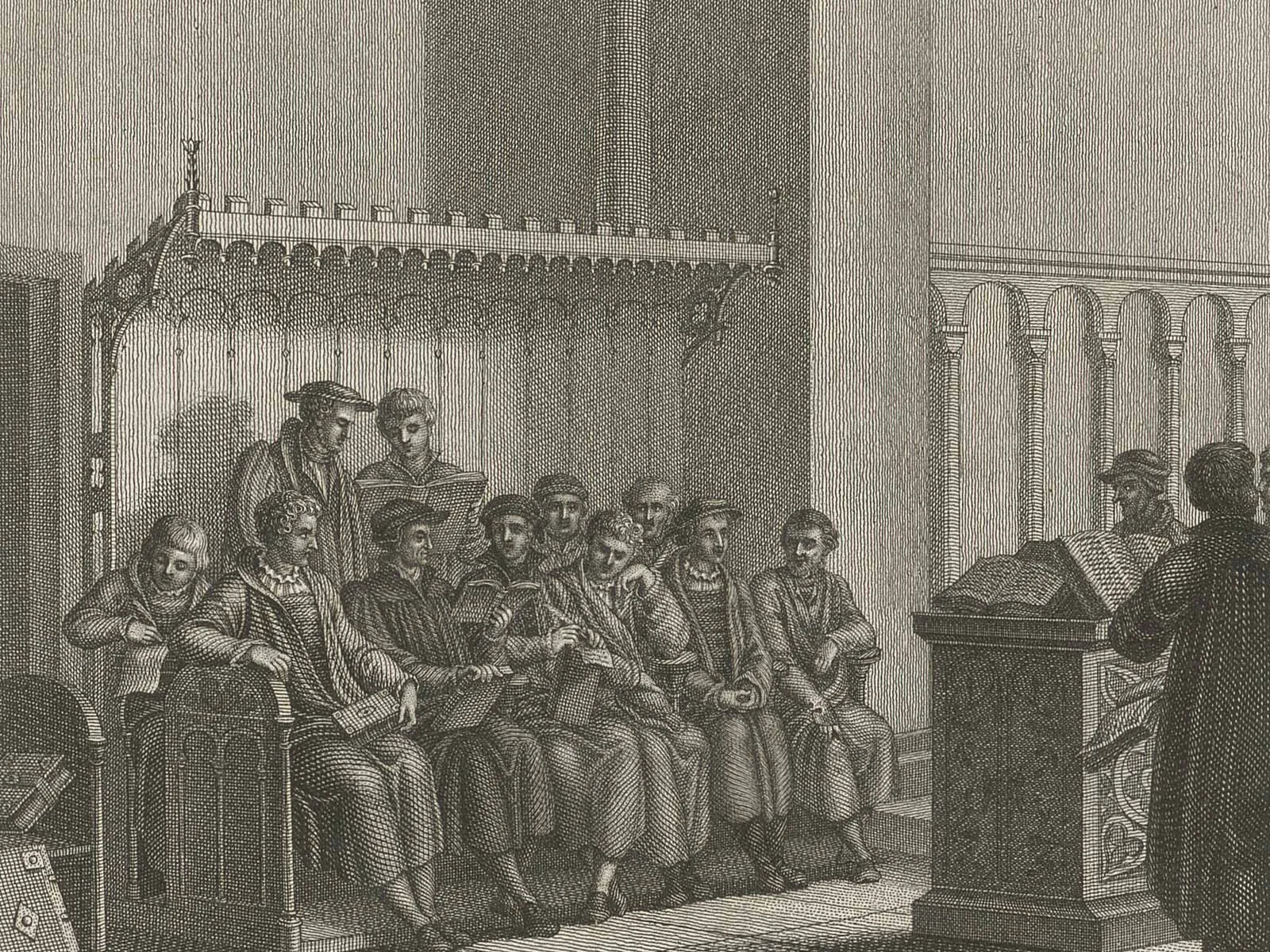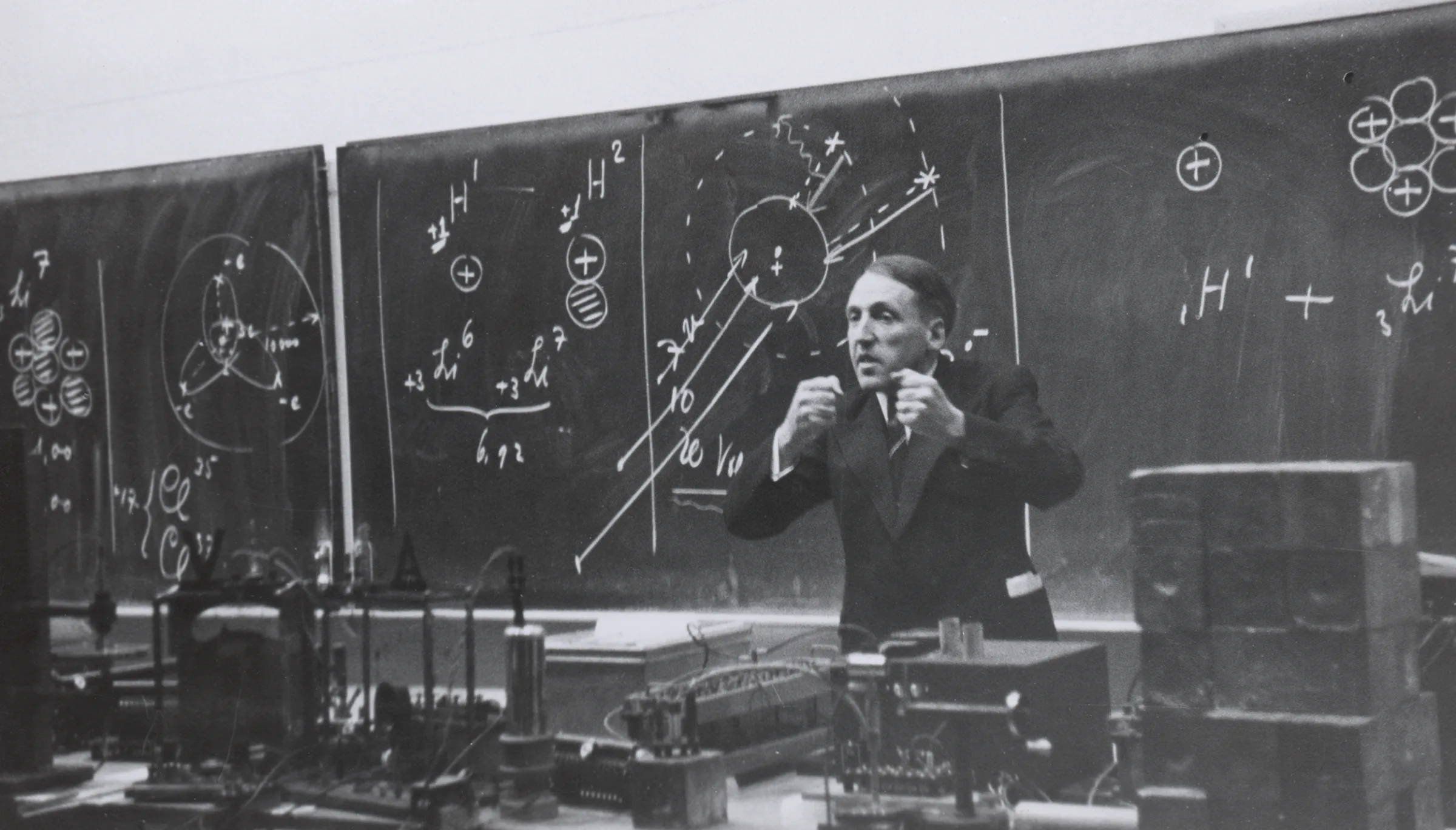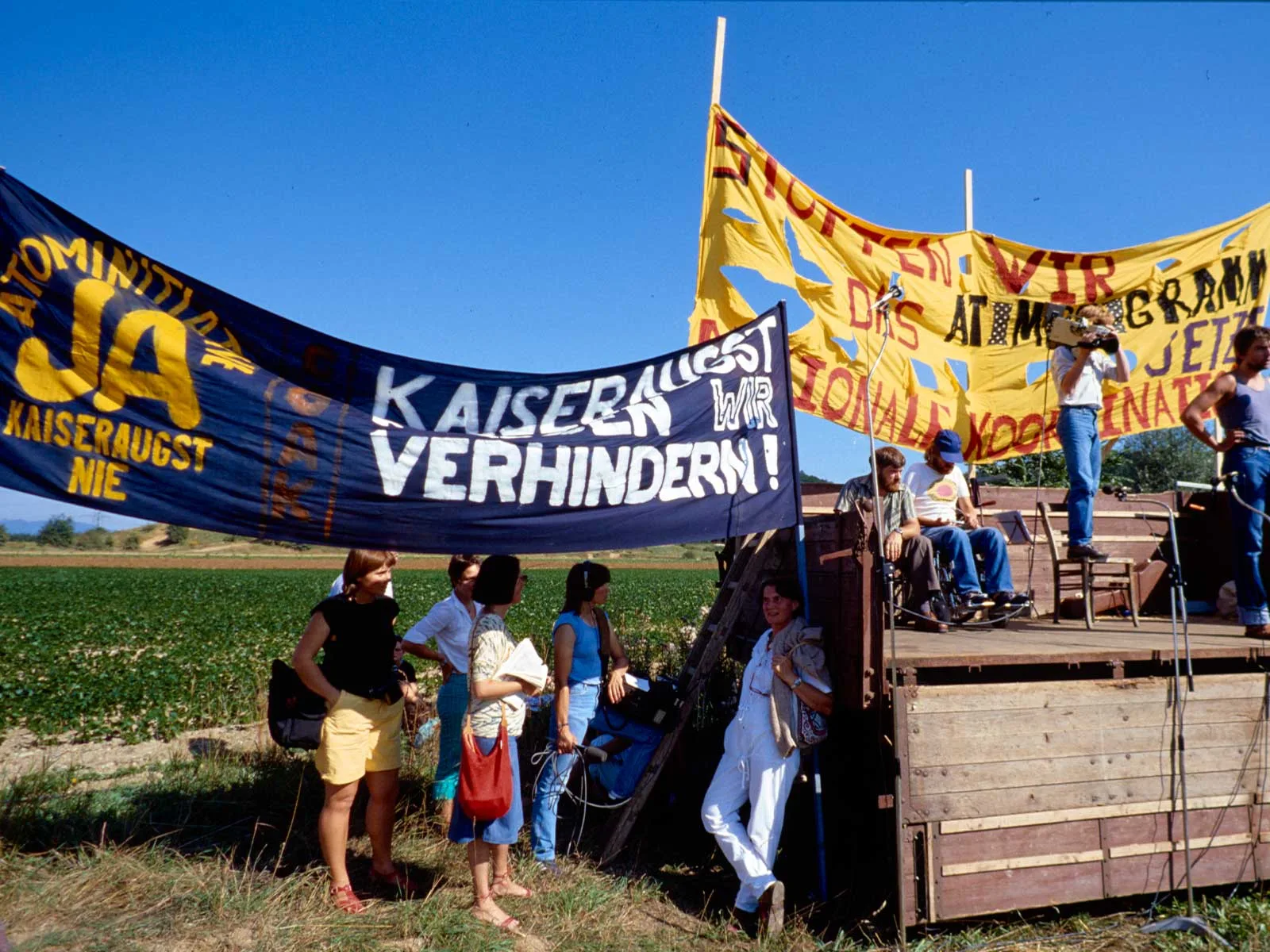
Opposition to Kaiseraugst nuclear power plant
A broad cross-section of society came out in unity against the construction of Kaiseraugst nuclear power plant. The burgeoning anti-nuclear movement benefited from a high degree of media resonance.
The association known as “Nordwestschweizer Aktionskomitee gegen das Atomkraftwerk Kaiseraugst” NAK, later renamed “Nordwestschweizer Aktionskomitee gegen Atomkraftwerke” NWA, which translates as North-Western Switzerland Action Committee against Nuclear Power Plants, was founded in 1970. This organisation had the potential to form a significant lobby and aimed to unite the fragmented anti-nuclear campaigners. The association initially exhausted all the political and legal avenues open to it. These included complaints, objections, initiatives, interpellations, motions and public information events. A majority of Kaiseraugst’s voters also rejected the project in a popular consultation held on 15 June 1972. As a last resort, the NWA plus the local authorities of Basel, Kaiseraugst and Rheinfelden appealed to the Federal Supreme Court in Lausanne, which ruled against them on 26 July 1973. The court based its ruling on the Atomic Energy Act of 1959, which allocated authority for the granting of operating licences for nuclear power plants primarily to federal government bodies.
The frosty December 1973 sit-in
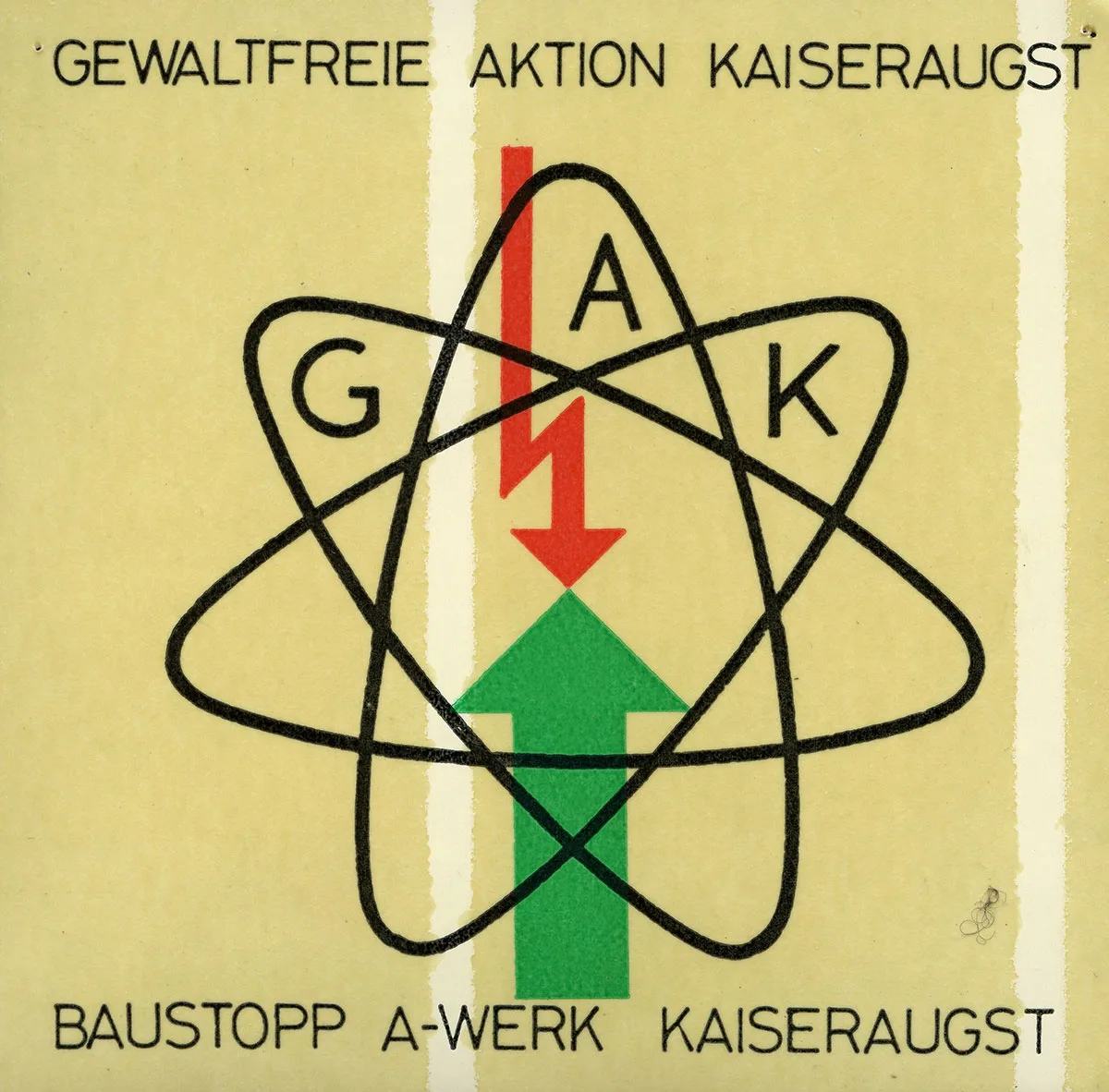
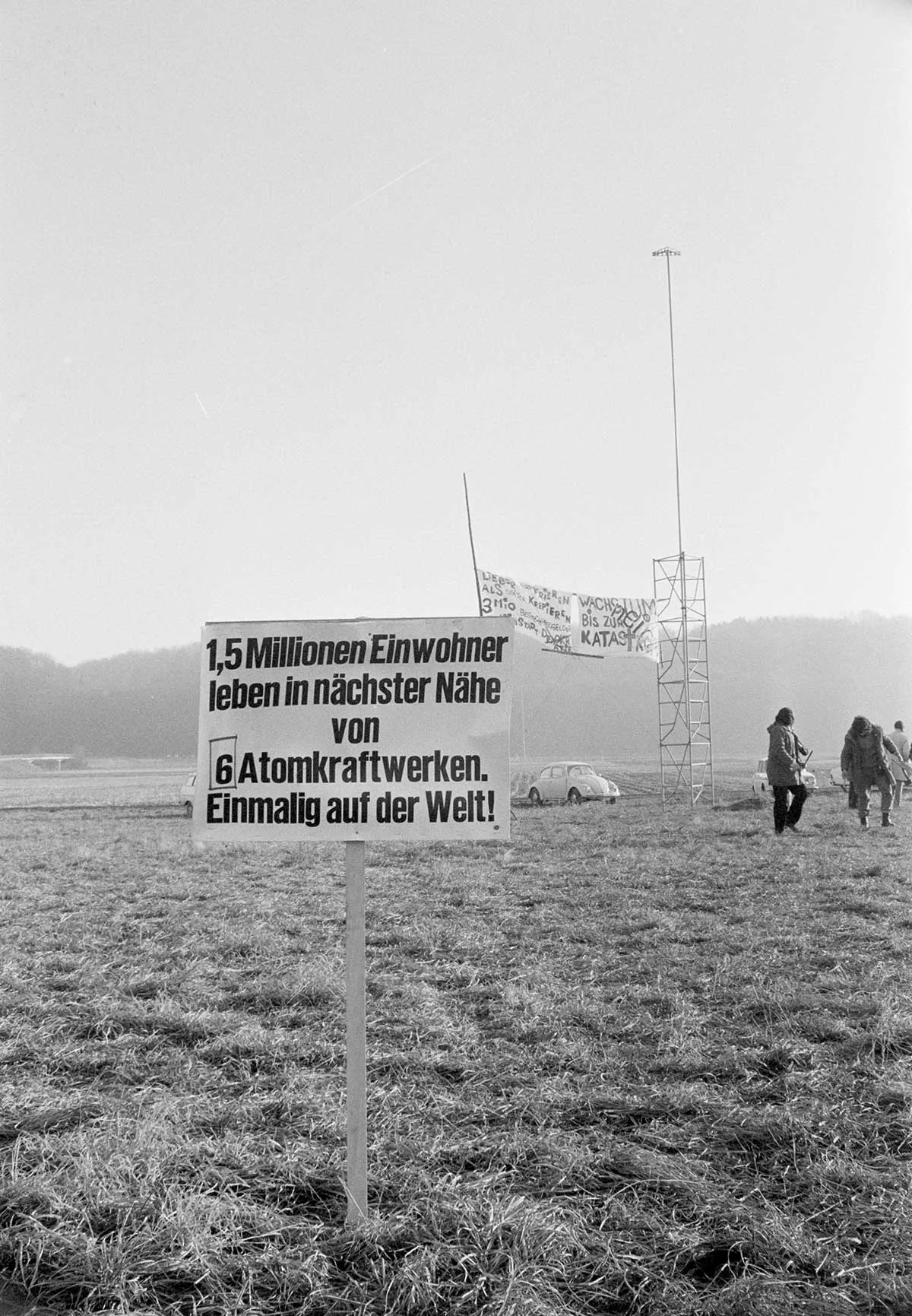
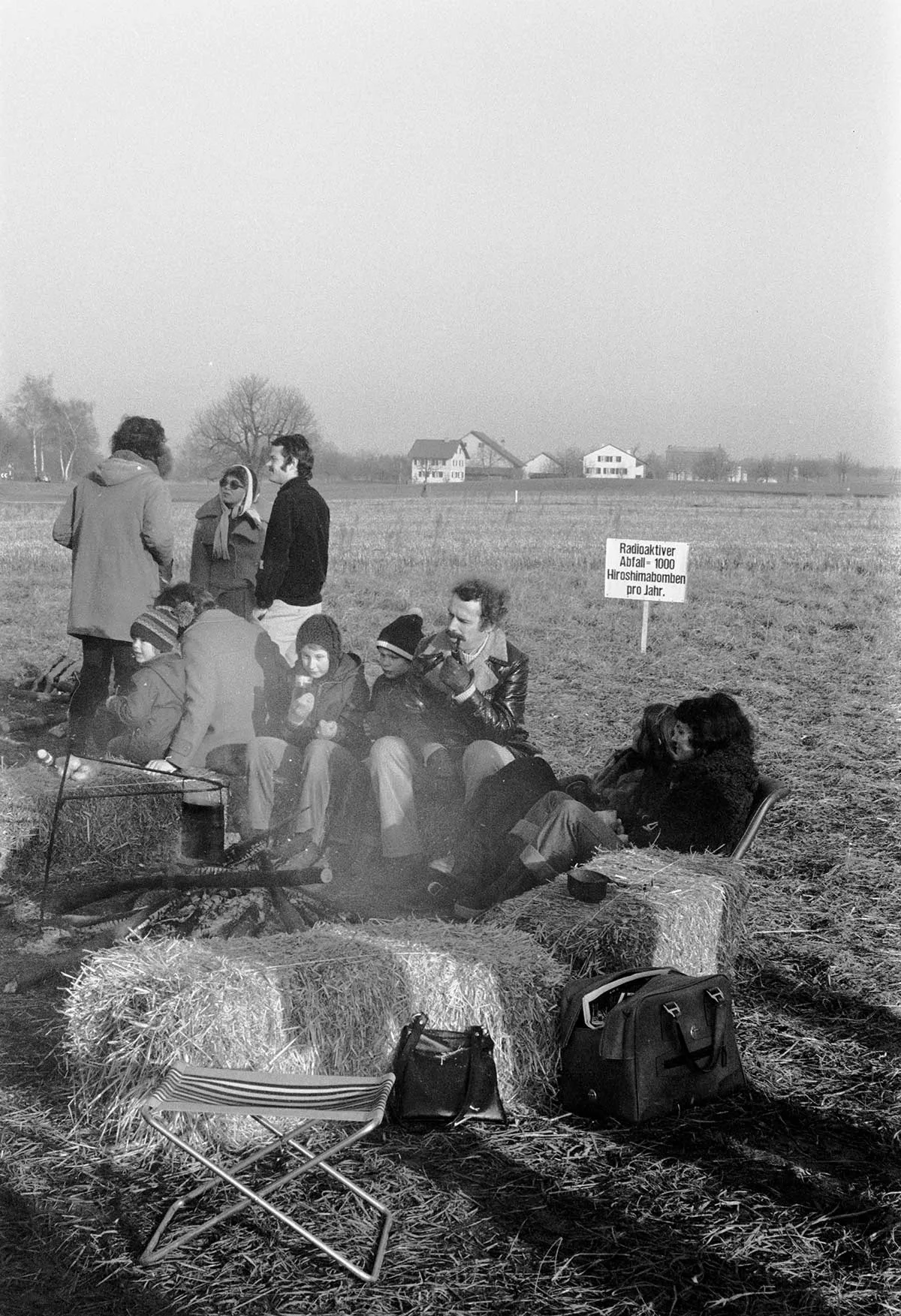
Every day dozens of sympathisers come out in support of the protestors, bringing them snacks and drinks.
The eleven-week occupation of the site in 1975
“Si sin vor d Laschtwäge ghoggt und hän zältlet dört us
S het zwor Pflutter gha, Räge und Schnee
Doch Buure hän Holz brocht und jede Dag Milch
Und ko bsetze sin immer meh
Es sin hunderti ko, s het e Dorf gä dört us
In dr ganze Region hän is Lyt unterschtützt
Und jetz müen d Behörde verhandle mit uns
Me gseht, was mer gmacht hän het gnützt
Bis jetz.”
Or, in English:
They stayed in front of the lorries and camped out there / It was muddy, rainy and snowy / But the farmers brought them wood and milk every day / And people kept coming / Hundreds came and the camp slowly turned into a village / People throughout the region supported them / And now the authorities must talk with us / It’s evident our actions are bearing fruit / For the time being.
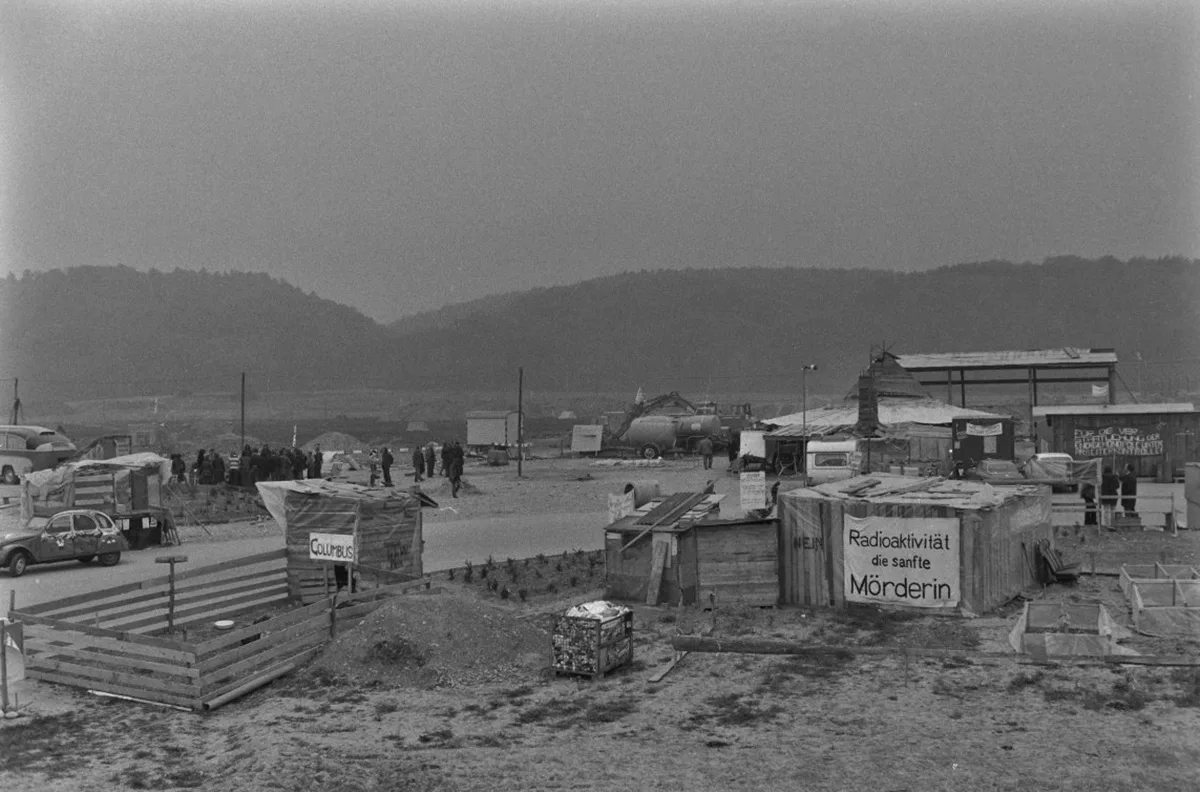
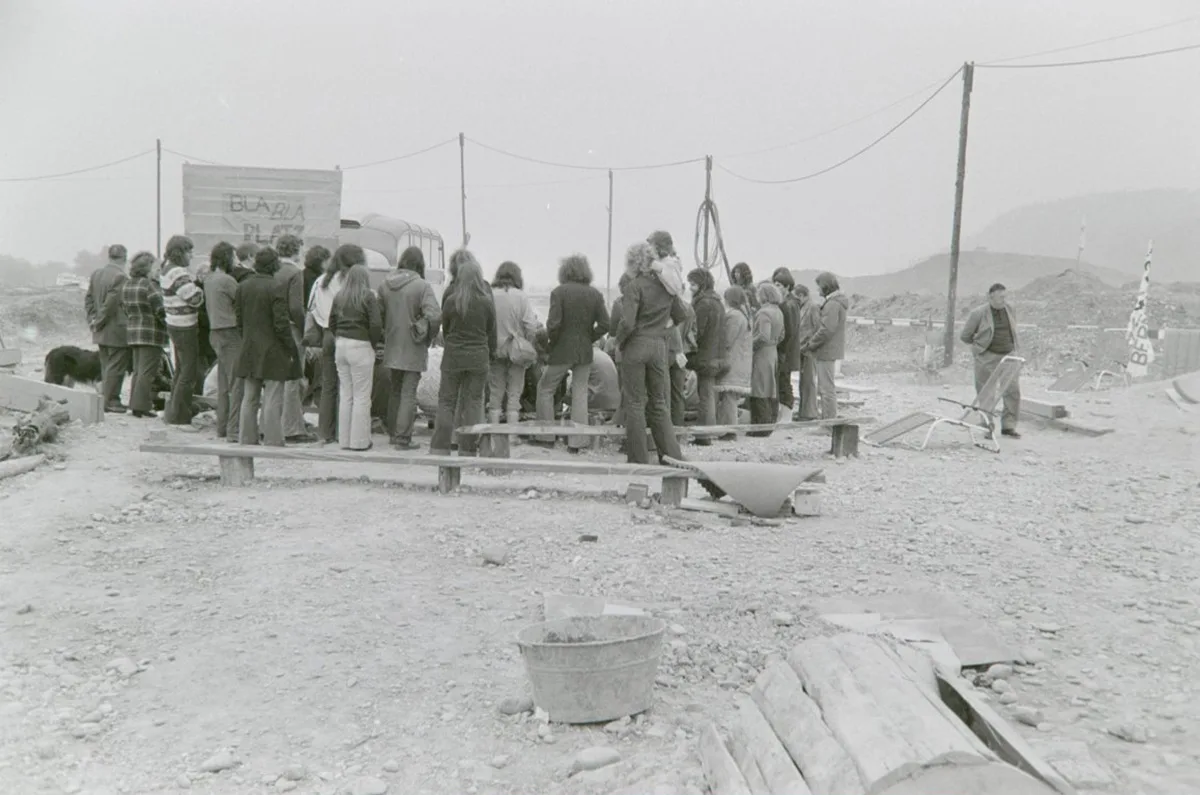
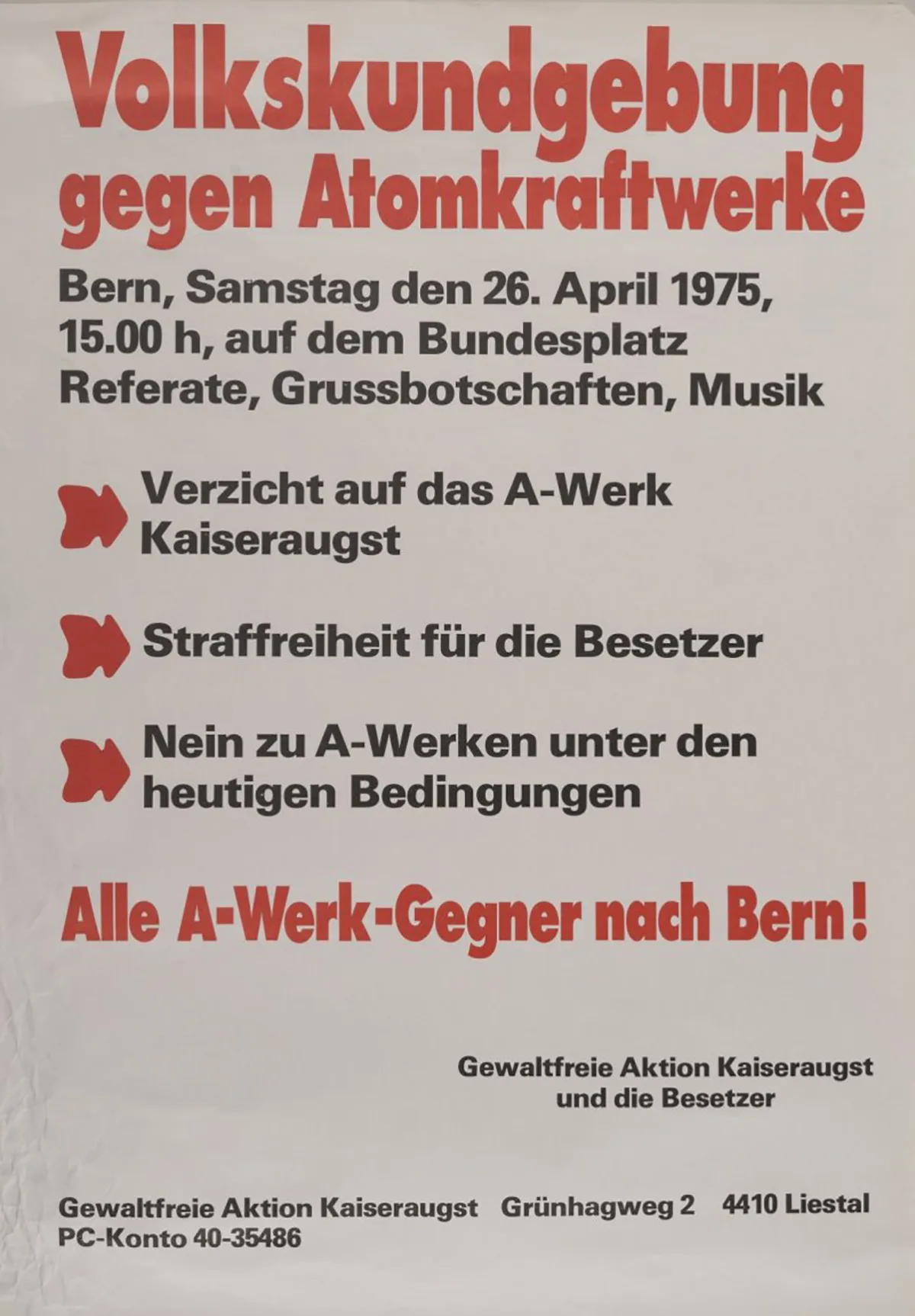
The protests during the 1980s that led to the abandonment of the project
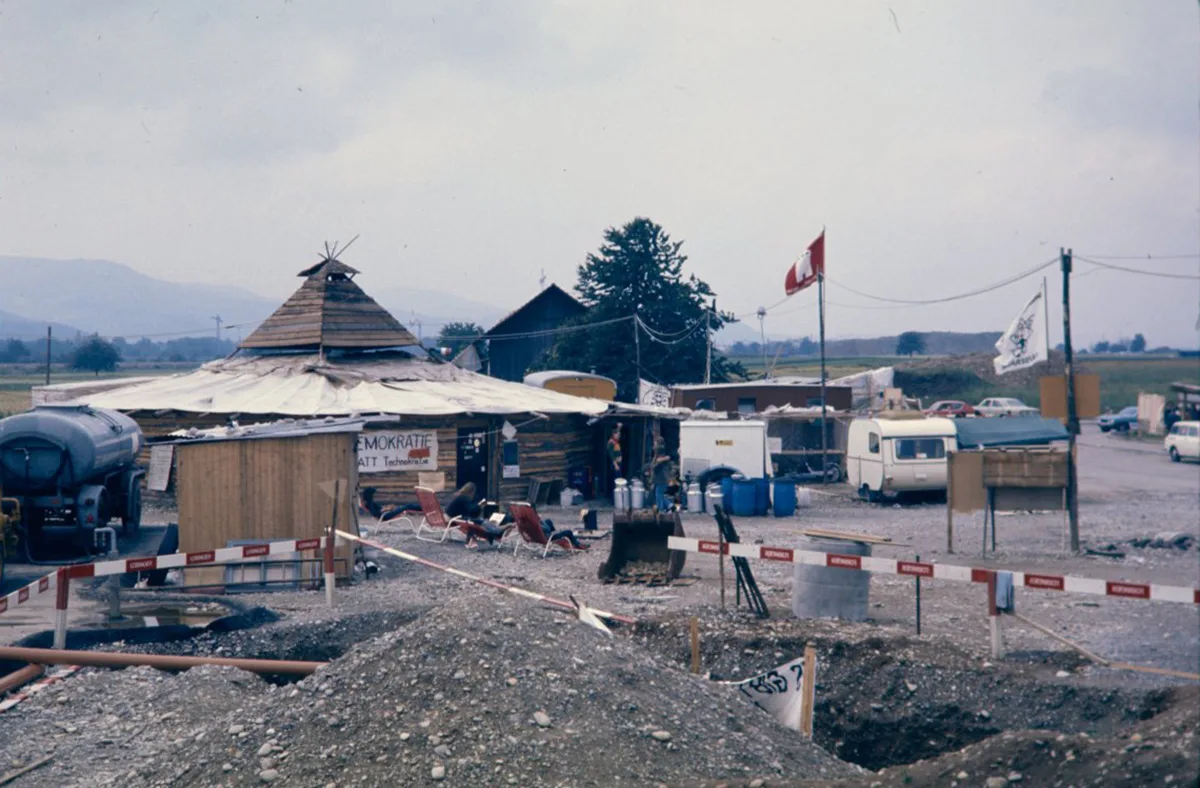
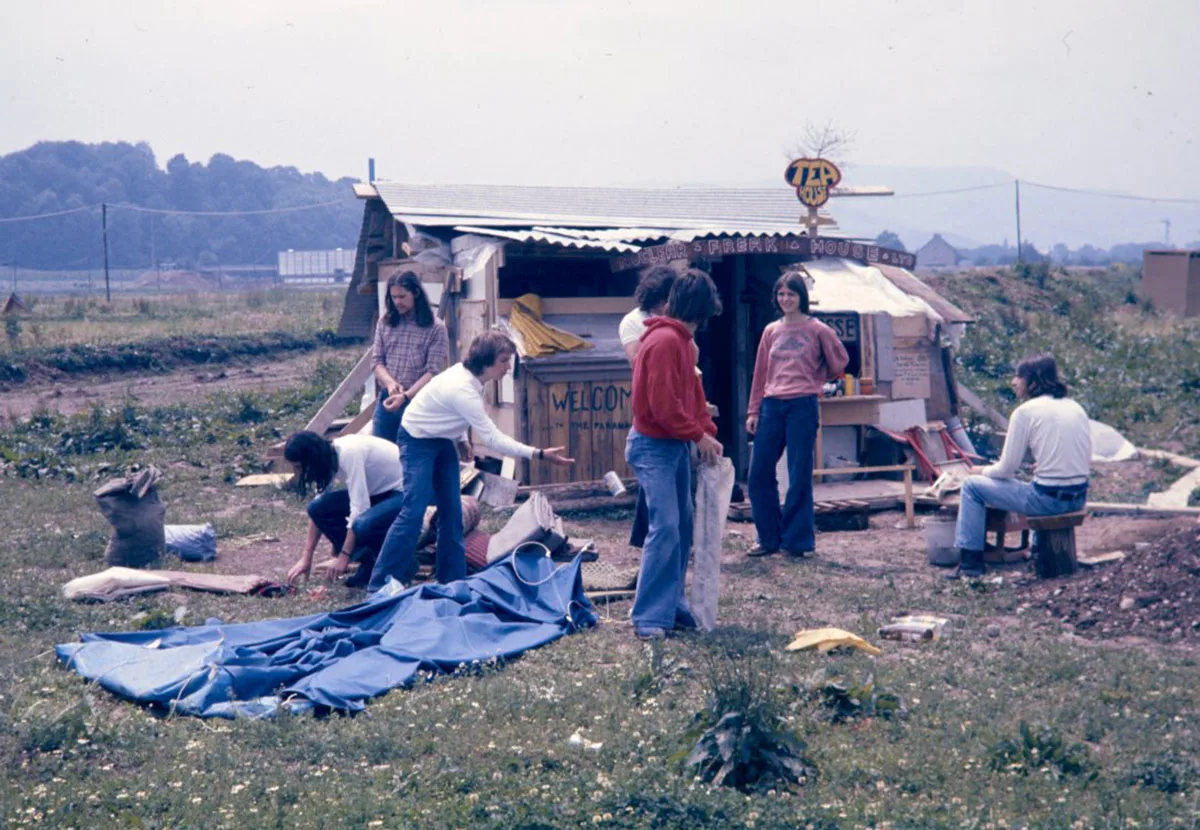
The occupation of the site in 1975 and subsequent protests raised public awareness of the dangers of nuclear energy and the pressing need to conduct a revision of the Atomic Energy Act. The anti-nuclear lobby initiated cantonal and national votes calling for such a revision, which then took place in 1979. According to the federal decree accepted by the people, the construction of nuclear power plants became contingent on, among other things, a general licence and proof of need.
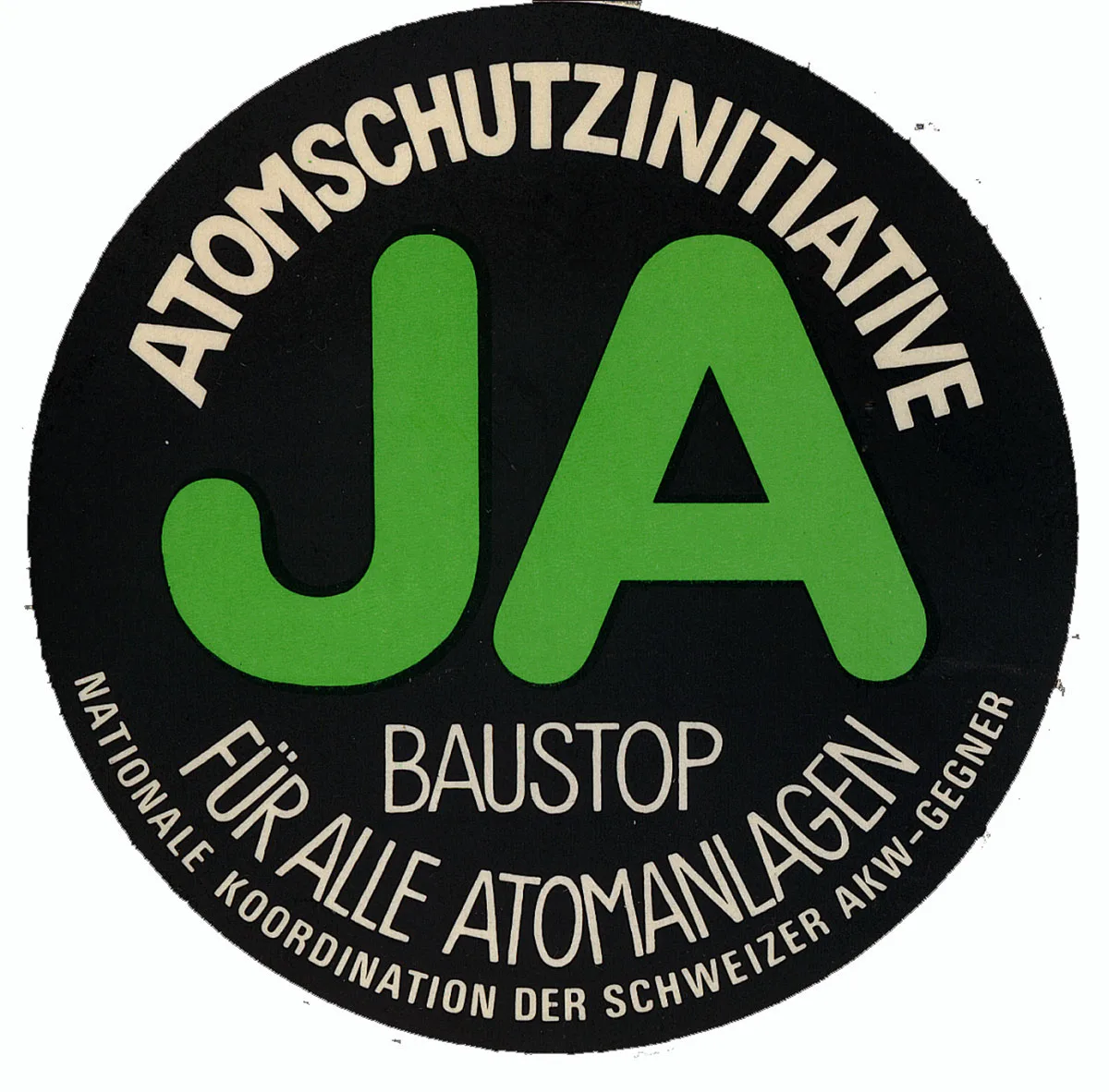
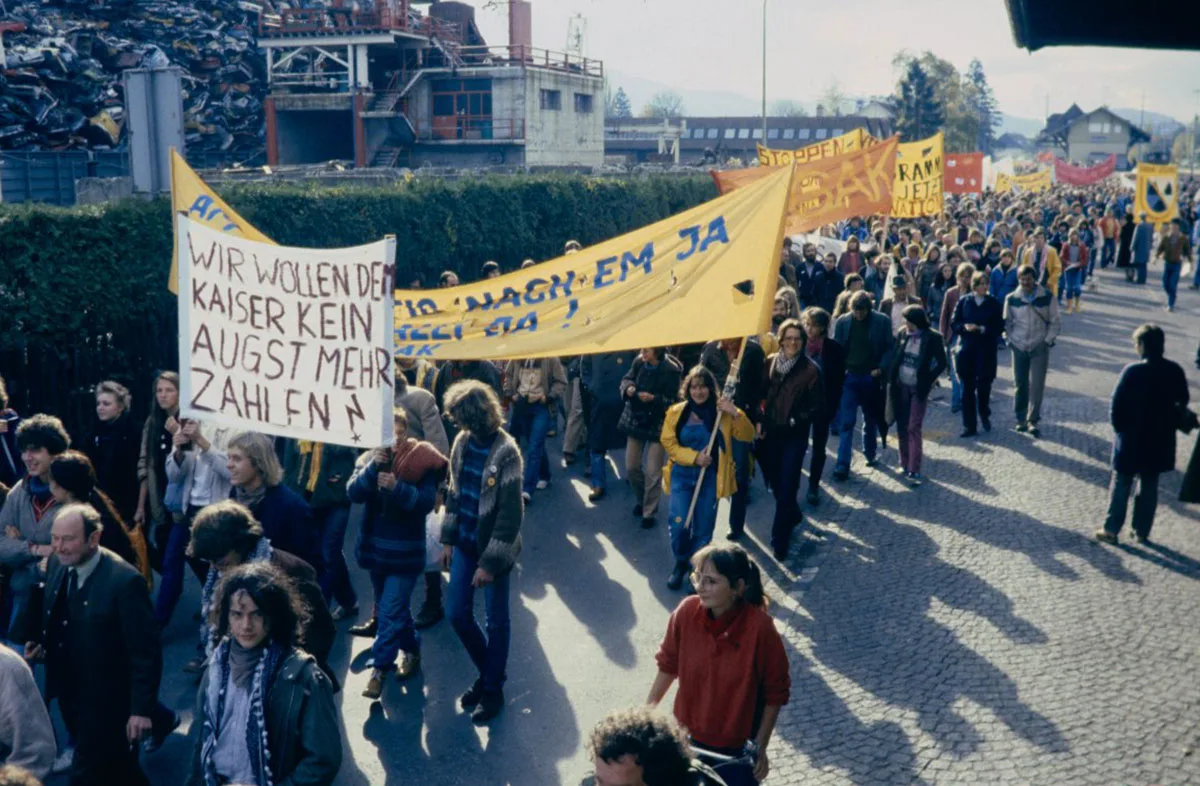
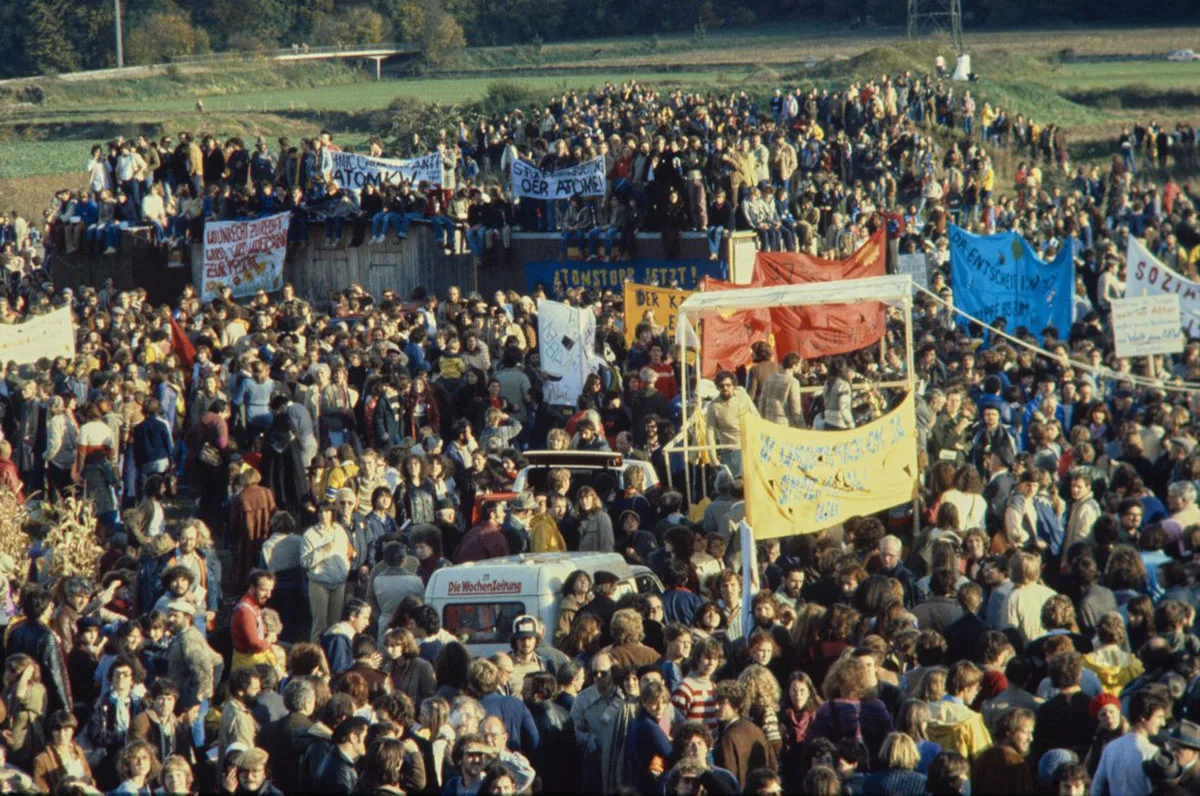
At the same time, the persistent opposition to the planned nuclear power plant at Kaiseraugst did not signal the end of nuclear energy in Switzerland. Nuclear power plants were connected to the grid at Gösgen and Leibstadt in 1979 and 1984 respectively. Nevertheless, the occupation and protests at the Kaiseraugst site did lead to the establishment of a national anti-nuclear movement. This movement is still relevant in Switzerland in view of the current debate on the security of the electricity supply.
Actualités Suisses Lausanne
Some of the photographs displayed are from press picture agency Actualités Suisses Lausanne (ASL). This agency, based in French-speaking Switzerland, was founded in 1954 by Roland Schlaefli and Edouard Baumgartner. ASL specialised in sports photos as well as political subjects. Schlaefli was an accredited Federal Palace photographer until the agency’s closure. Prior to that, Schlaefli had worked at another press picture agency, Presse Diffusion Lausanne (PDL), which was acquired by ASL in 1974. ASL folded at the turn of the millennium, after which the Swiss National Museum took over the agency’s photo archives.

